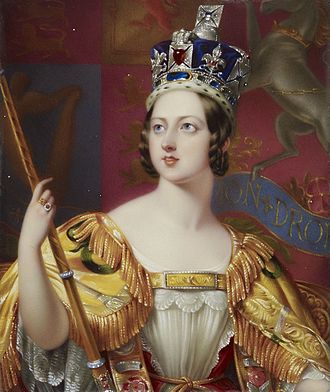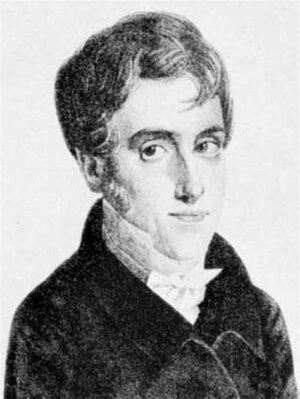
Early Life
Born Agnes Teresa McGlade on October 23, 1880, she was a member of a Catholic nationalist family based in Belfast, Ireland. Her mother died when she was two, while her father’s profession as a landowner/ farmer, ensured that the family always had income from family land.
Her father soon left for Australia and Agnes was brought up by an aunt, studying at St Dominic’s School, Belfast, convent schools and in Paris. Thinking she would pursue teaching, she enrolled in the South Kensington School of Art.
Before taking up teaching duties, Agnes enrolled in the Abbey School of Acting. Her career with the Abbey lasted from 1912 – 1934 where she performed in many productions, listed in the Abbey Theatre Archives.
Agnes changed her name when she began her acting career with the Abbey Theatre. One of her earliest appearances was in George Bernard Shaw‘s The Shewing-Up of Blanco Posnet in which she played the part of a swaggering American ranch girl. The production played in Dublin as well as in New York, opening on 20 November 1911 at the Maxine Elliott Theatre, marking Una‘s American debut.
Acting career
By 1913, Una was based in London, where she appeared in The Magic Jug, The Starlight Express (1915-16 at the Kingsway Theatre), and Paddy the Next Best Thing. In the early 1920s, she appeared as a cockney maid in Plus Fours followed in 1924 by her portrayal of a cockney waitress in Frederick Lonsdale’s The Fake.
In a single paragraph review, an unnamed reviewer noted “Una O’Connor’s low comedy hotel maid was effectively handled.” The latter show also played in New York (with Una in the cast), opening 6 October 1924 at the Hudson Theatre. A review of the New York performances of The Fake recounts details of the plot, but then mentions:
two players of more than ordinary excellence. In the third act of The Fake occurs a scene between Una O’Connor and Godfrey Tearle, with Miss O’Connor as a waitress trying a crude sort of flirtation with Mr. Tearle. He does not respond at all and the longing, the pathos of this servant girl when she has exhausted her charms and receives no encouragement, is the very epitome of what careful character portrayal should be. Miss O’Connor is on the stage for only this single act, but in that short space of time she registers an indelible impression. Rightly, she scored one of the best hits of the performance.
These two plays in which Una portrayed servants and waitresses appear to have portended her future career. Returning to London, she played in The Ring o’ Bells (November 1925), Autumn Fire (March 1926), Distinguished Villa (May 1926) and Quicksands of Youth (July 1926).
When Autumn Fire toured the U.S., opening first in Providence, Rhode Island, a critic wrote: “Una O’Connor, who plays Ellen Keegan, the poor drudge of a daughter, bitter against life and love, does fine work. Her excellence will undoubtedly win her the love of an American public.”
She made her first appearance on film in Dark Red Roses (1929), followed by Murder! (1930) directed by Alfred Hitchcock, and an uncredited part in To Oblige a Lady (1931).
Despite her lengthy apprenticeship, she had attracted little attention. British critic Eric Johns recalled meeting her in 1931 in which she confessed: “I don’t know what I’m going to do if I don’t get work … The end of my savings is in sight and unless something happens soon, I’ll not be able to pay the rent”.
Her luck changed when she was chosen by Noël Coward to appear in Cavalcade at the Theatre Royal, Drury Lane in 1933. Expressing surprise that Coward noticed her, Coward responded that he had watched her for years and wrote the part with her in mind. She portrayed an Edwardian servant who transforms herself into a self-made woman. When the curtain came down after a performance attended by Hollywood executives, they exclaimed to each other “We must have that Irish woman. That is obvious”.
Her success led her to reprise her role in the film version of Cavalcade, released in 1933, and with its success, Una decided to remain in the United States.
Among Una‘s most successful and best remembered roles are her comic performances in James Whale‘s The Invisible Man (1933) as the publican’s wife and in Bride of Frankenstein (1935) as the Baron’s housekeeper. She also appeared on two films for director John Ford: The Informer (1935) and The Plough and the Stars (1936).
Feeling homesick, in 1937 she returned to London for twelve months in the hope of finding a good part but found nothing that interested her. While in England she appeared in three live BBC Television productions, including a play by Irish playwright Teresa Deevy called In Search of Valour (1939), in which she played the part of Stasia Claremorris. After her return to America, the storage facility that housed her furniture and car was destroyed in one of The Blitz strikes, which she took as a sign to remain in America.
Her film career continued with roles in Michael Curtiz‘s The Adventures of Robin Hood (1938) and The Sea Hawk (1940); and in Leo McCarey‘s The Bells of St. Mary’s (1944). She appeared in stage productions in supporting roles and achieved an outstanding success in the role of Janet McKenzie, the nearly deaf housemaid, in Agatha Christie‘s Witness for the Prosecution at Henry Miller’s Theatre on Broadway from 1954 to 1956; she also appeared in the film version in 1957, directed by Billy Wilder. As one of the witnesses, in what was essentially a serious drama, Una‘s character was intended to provide comic relief. It was her final film performance.
After a break from her initial forays in television, she took up the medium again by 1950. In 1952, she was able to state that she had been in 38 productions that year alone. In a rare article written by Una, she called working in television “the most exacting and nerve-racking experience that has ever come my way. It is an attempt to do two things at once, a combination of stage and screen techniques with the compensations of neither”.
Observing many actors disliked television work, Una took the opposite view in liking the medium it because it allowed her to play many parts. She lamented that preparation for television work was too short a period for an actor to fully realize the depths of role characterization, but it showed an actor’s mettle by the enormous amount of work needed. “Acting talent alone is not enough for the job. It requires intense concentration, an alert-quickmindedness that can take changes in direction at the last minute”.
Una concluded presciently: “It sounds fantastic and that is just exactly what it is, but it also an expanding field of employment that has come to stay. As such it is more than welcome here, where the living theatre seems determinedly headed the opposite way”.
Reportedly she was “happily resigned” to being typecast as a servant. “There’s no such thing as design in an acting career. You just go along with the tide. Nine times out of ten one successful part will set you in a rut from which only a miracle can pry you”.
Her weak heart was detected in 1932 when her arrival in America began with detention at Ellis Island because of a “congenital heart condition”. By the time of her appearance in the stage version of Witness for the Prosecution she had to stay in bed all day, emerging only to get to the theater and then leaving curtain calls early to return to her bed. Her appearance in the film version was intended to be her last.
Later life & death
Una became a United States citizen on 3 March 1952. She had been living at the Windsor House at 100 West 58th Street in Manhattan.
She died, having never married nor having children, in New York City from heart disease, aged 78, on 4 February 1959 at the Mary Manning Walsh Home. She is interred in Calvary Cemetery in Queens, New York.
Filmography
- Dark Red Roses (1929) as Mrs. Weeks
- Murder! (1930) as Mrs. Grogram
- To Oblige a Lady (1931) (uncredited)
- Cavalcade (1933) as Ellen Bridges
- Pleasure Cruise (1933) as Mrs. Signus
- Timbuctoo (1933) as Myrtle
- Horse Play (1933) as Clementia
- Mary Stevens, M.D. (1933) as Mrs. Arnell Simmons
- The Invisible Man (1933) as Jenny Hall
- Orient Express (1934) as Mrs. Peters
- The Poor Rich (1934) as Lady Fetherstone
- All Men Are Enemies (1934) as Annie
- Stingaree (1934) as Annie
- Chained (1934) as Amy, Diane’s Maid
- The Barretts of Wimpole Street (1934) as Wilson
- Father Brown, Detective (1934) as Mrs. Boggs
- David Copperfield (1935) as Mrs. Gummidge
- Bride of Frankenstein (1935) as Minnie
- The Informer (1935) as Mrs. McPhillip
- Thunder in the Night (1935) as Julie – Hotel Chambermaid
- The Perfect Gentleman (1936) as Harriet Chatteris
- Rose-Marie (1936) as Anna Roderick
- Little Lord Fauntleroy (1936) as Mary
- Suzy (1936) as Landlady
- Lloyd’s of London (1936) as Widow Blake
- The Plough and the Stars (1936) as Mrs. Gogan
- Personal Property (1937) as Clara, Crystal’s Maid
- Call It a Day (1937) as Mrs. Milson, the Housekeeper
- The Adventures of Robin Hood (1938) as Bess
- The Return of the Frog (1938) as Mum Oaks
- We Are Not Alone (1939) as Susan O’Connor, Newcome’s Maid
- All Women Have Secrets (1939) as Mary
- His Brother’s Keeper (1940) as Eva
- It All Came True (1940) as Maggie Ryan
- Lillian Russell (1940) as Marie
- The Sea Hawk (1940) as Miss Latham
- He Stayed for Breakfast (1940) as Doreta
- The Strawberry Blonde (1941) as Mrs. Mulcahey
- Her First Beau (1941) as Effie
- Kisses for Breakfast (1941) as Ellie
- Three Girls About Town (1941) as Maggie O’Callahan
- Always in My Heart (1942) as Angie
- My Favourite Spy (1942) as Cora
- Random Harvest (1942) as Tobacconist
- Forever and a Day (1943) as Mrs. Caroline Ismay
- This Land Is Mine (1943) as Mrs. Emma Lory
- Holy Matrimony (1943) as Sarah Leek
- Government Girl (1943) as Mrs. Harris
- The Canterville Ghost (1944) as Mrs. Umney
- My Pal Wolf (1944) as Mrs. Blevin
- Christmas in Connecticut (1945) as Norah
- The Bells of St. Mary’s (1945) as Mrs. Breen
- Cluny Brown (1946) as Mrs. Wilson
- Of Human Bondage (1946) as Mrs. Foreman
- Child of Divorce (1946) as Nora, the Maid
- The Return of Monte Cristo (1946) as Miss Beedle
- Unexpected Guest (1947) as Matilda Hackett
- Lost Honeymoon (1947) as Mrs. Tubbs
- Banjo (1947) as Harriet
- The Corpse Came C.O.D. (1947) as Nora
- Ivy (1947) as Matilda Thrawn
- Fighting Father Dunne (1948) as Miss O’Rourke
- Adventures of Don Juan (1948) as Duenna
- Ha da venì … don Calogero! (1952) as Angelica, perpetua
- Witness for the Prosecution (1957) as Janet MacKenzie (final film role)



